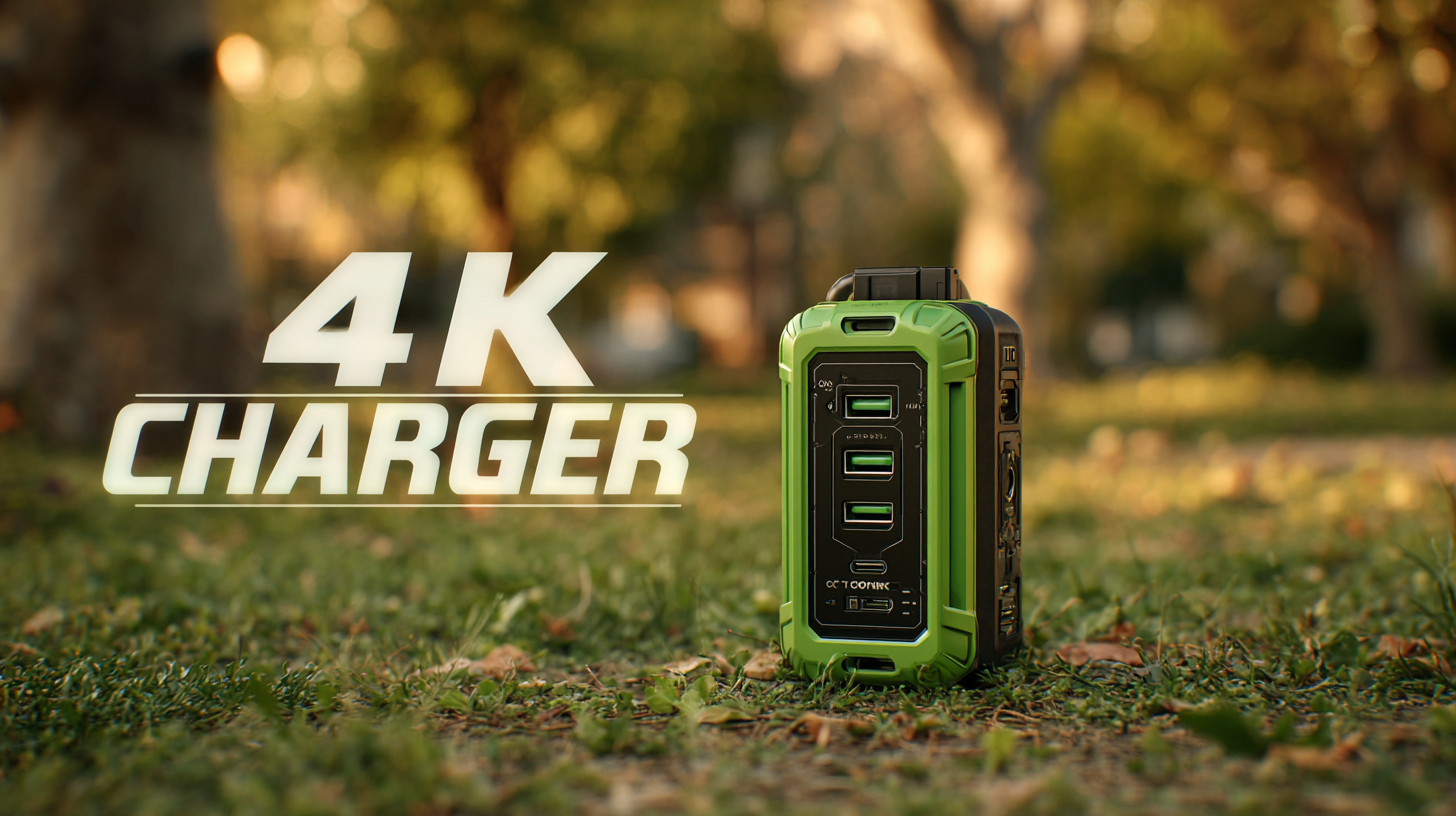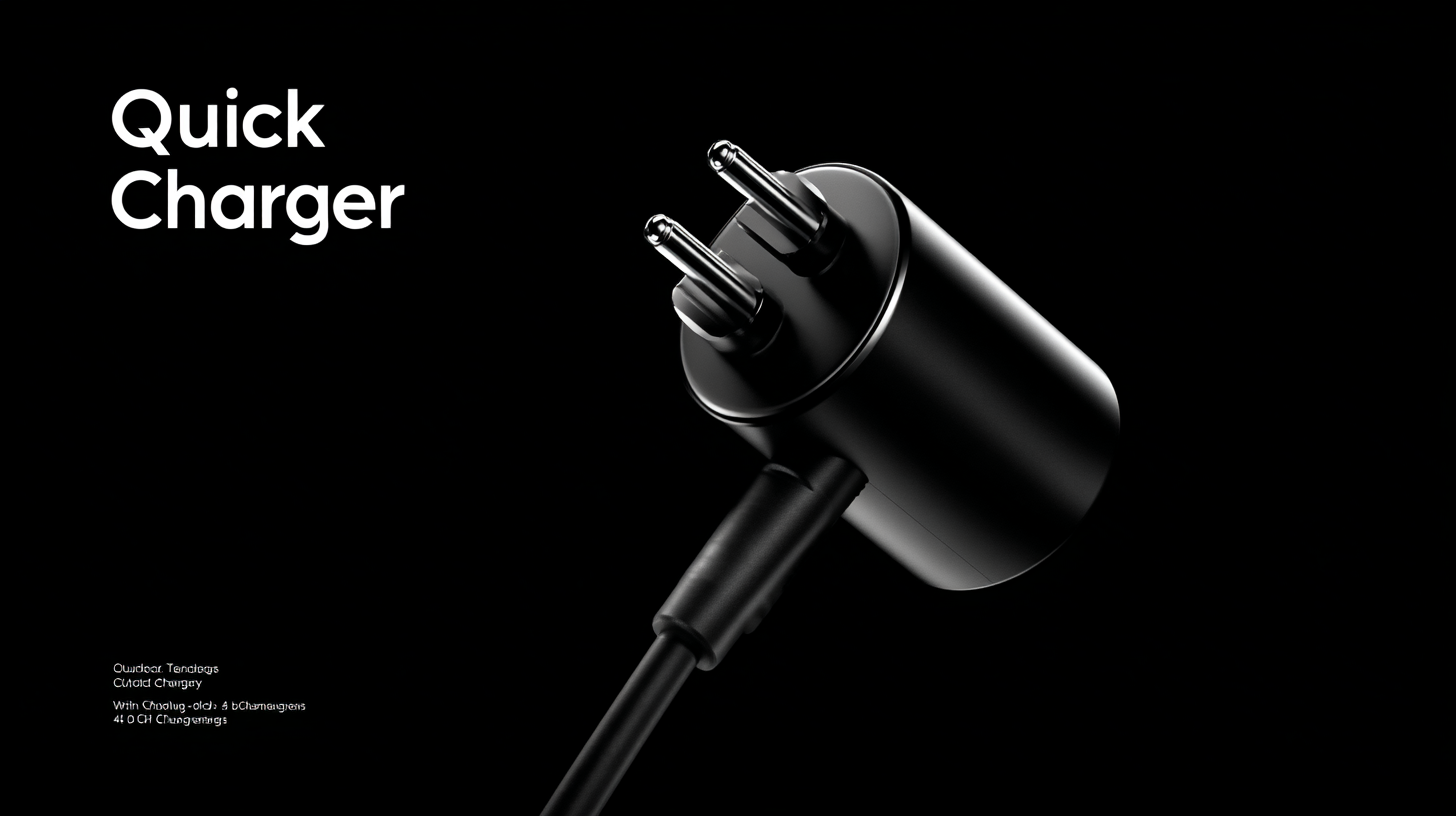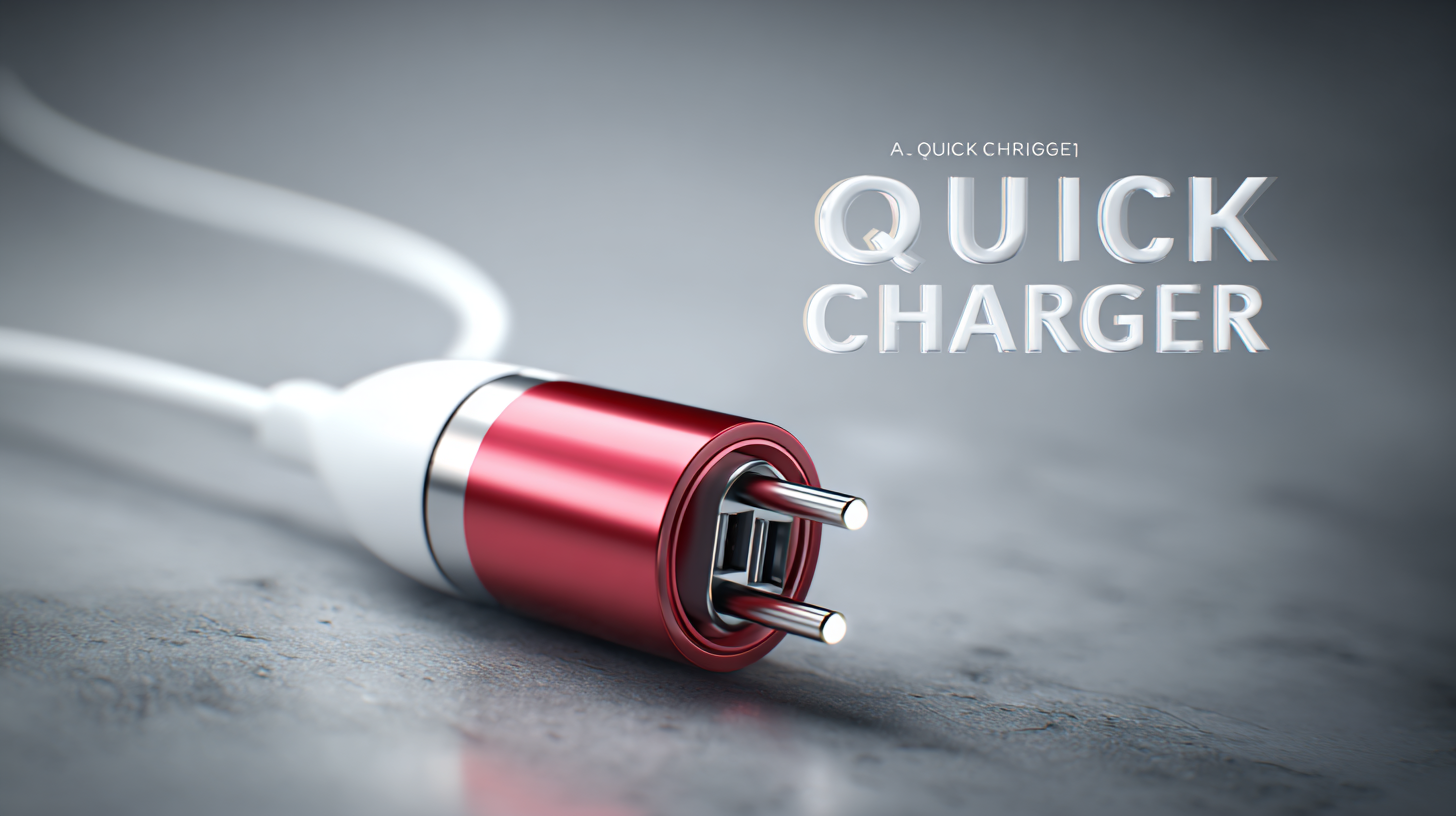Exploring the 2025 Technology Trends: How the Best Quick Chargers Will Shape Consumer Electronics
As we move towards 2025, the consumer electronics landscape is set to be transformed by significant technology trends, notably in the realm of fast charging solutions. Quick chargers have emerged as a crucial component, catering to the ever-increasing demand for rapid power replenishment in our devices. According to a recent report by Grand View Research, the global market for rapid chargers is expected to reach $40 billion by 2025, growing at a CAGR of 25.4%. This surge underscores the importance of efficiency and convenience in our daily tech interactions. With advancements in charging technology, the best quick chargers are not only enhancing user experience but also contributing to sustainable energy consumption by minimizing charging times and optimizing power distribution. As we delve into this topic, it becomes clear that the evolution of quick chargers will play a pivotal role in shaping consumer expectations and the overall electronics ecosystem.

The Evolution of Quick Charging Technology: What to Expect by 2025
The evolution of quick charging technology has been nothing short of remarkable, and by 2025, we can expect even more significant advancements that will redefine how we power our devices. The upcoming years will likely see the introduction of higher voltage standards and more efficient charging protocols that can significantly reduce charging times while maintaining safety. Innovations in battery chemistry, such as the adoption of solid-state batteries, may not only increase charging speed but also enhance the energy density, leading to longer-lasting power solutions.
In addition to hardware improvements, the software that governs charging processes will play a crucial role in shaping the quick charging landscape. Intelligent charging algorithms will become more prevalent, optimizing power delivery based on real-time usage patterns and device needs. This ensures a balanced approach that prioritizes battery health while providing the rapid charging capabilities that consumers demand. As a result, users may see a seamless experience, with their devices quickly restored to full power without the concerns of overheating or rapid degradation associated with earlier charging technologies.

Key Players in the Quick Charger Market and Their Innovations
As we delve into the landscape of quick charger technology, several key players stand out for their innovative contributions. Companies like Anker, Belkin, and Samsung are pushing boundaries with rapid charging capabilities, ensuring consumer electronics keep pace with our fast-paced lives. Anker, for example, has introduced PowerIQ technology that optimizes charging speed by detecting the device’s needs. Meanwhile, Samsung’s Adaptive Fast Charging works seamlessly with its range of smartphones, demonstrating how advancements in charging technology can enhance user experience.
To get the most out of your quick charger, consider these tips. First, always use a charger that is compatible with your device to avoid damage and maximize efficiency. Second, regularly check for software updates on your devices, as manufacturers often release updates that enhance charging performance. Lastly, invest in high-quality cables, as they can significantly affect charging speed and the longevity of your devices.
With these innovations and tips, consumers will find that quick chargers not only enhance their gadget experience but also align with the growing demand for fast and efficient technology in our everyday lives.
How Consumer Demand is Driving the Future of Fast Charging Solutions
The rapid evolution of consumer demands is significantly driving the development of fast charging solutions in the technology sector. According to a report by Mordor Intelligence, the global fast charging market is expected to grow at a CAGR of over 25% from 2021 to 2026, indicating a strong consumer preference for quicker and more efficient charging options. This surge in demand is primarily fueled by the increasing dependence on mobile devices and the trend of high-performance electronics that require faster power replenishment.
As smartphone manufacturers and other consumer electronics brands respond to this shift, innovations in quick charging technologies are becoming a focal point. A study by ResearchAndMarkets predicts that by 2025, over 70% of electronic devices will support fast charging capabilities, driven by greater consumer awareness and the proliferation of compatible accessories. This evolution not only enhances user experience but also contributes to the overall efficiency of devices, thus shaping the landscape of how consumers engage with technology in their daily lives. With consumers prioritizing convenience and performance, the landscape of fast charging solutions is set to redefine electronic usability and accessibility in the coming years.
The Impact of Quick Charging on Device Design and User Experience
The rapid evolution of quick charging technology is not only revolutionizing the way we power our devices but is also significantly influencing the design of consumer electronics. As manufacturers strive to integrate faster charging capabilities, device designs are becoming sleeker and more efficient. This trend necessitates the use of advanced materials and innovative engineering solutions that can withstand higher temperatures and manage increased energy flows. Consequently, we are beginning to see thinner smartphones, lightweight laptops, and compact wearables that offer larger batteries without compromising on aesthetics.
Moreover, the user experience is being profoundly enhanced by quick charging technology. Consumers are increasingly reliant on their devices throughout the day, leading to a demand for solutions that can keep up with their fast-paced lifestyles. With the ability to power a device to 50% in just 30 minutes or less, users can enjoy unparalleled convenience, reducing the anxiety around battery life. This shift not only changes how users interact with technology but also influences their purchasing decisions, favoring brands that prioritize quick charging as a critical feature. As we look toward the future, the integration of quick charging technology will undoubtedly continue to reshape both device design and user engagement in the consumer electronics market.
Sustainability in Quick Charging: Balancing Speed and Energy Efficiency
As we look towards 2025, the technology landscape is rapidly evolving, particularly in the realm of quick charging solutions. The emphasis on sustainability is becoming paramount. Quick chargers are now being designed with energy efficiency at the forefront, ensuring that rapid charging does not compromise environmental integrity. Innovative approaches, such as the integration of renewable energy sources and advanced battery storage systems, are being implemented to minimize carbon footprints while providing fast, reliable power for electric vehicles. This balance between speed and sustainability is crucial as consumer electronics and transportation sectors align with global efforts to reduce greenhouse gas emissions.
In various regions, partnerships and infrastructures are emerging that underscore the importance of sustainable charging solutions. For instance, new EV charging hubs are being established in urban centers, combining convenience and eco-friendliness for electric vehicle owners. These hubs are strategically located to maximize accessibility while promoting the use of renewable energy sources. Furthermore, advancements in energy storage technology are making it feasible to enhance the efficiency of charging systems, extending battery life, and reducing the overall environmental impact. As we navigate the future of technology, the harmonization of quick charging capabilities with sustainable practices will play a pivotal role in shaping the consumer electronics landscape.

